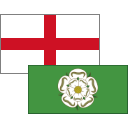
Scarborough
Mar 2019
>
 Mar 2019+
Mar 2019+
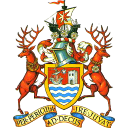
skarthi (personal name) + borg Old Norse fort, stronghold. Population - 61,749.
 UK
>
England
>
North Yorkshire
UK
>
England
>
North Yorkshire
Mar 2019+

Britain's first seaside town, they claim, holidaymakers have been heading here for over 300 years, they say. The prototype spa tempted tourists in to 'take the waters' and what with these twinges, these days, the restoratively rusty and bubbly needs sourcing.
Last night's reconnaissance doesn't count and with the bars all found to be bouncing, Alka Seltzer™s are providing this morning's medicine for most, probably.
Despite taking no sustenance, a fair few kms will be consumed as would your chips by the gulls with the warning sign a metaphor for Scarborough itself.
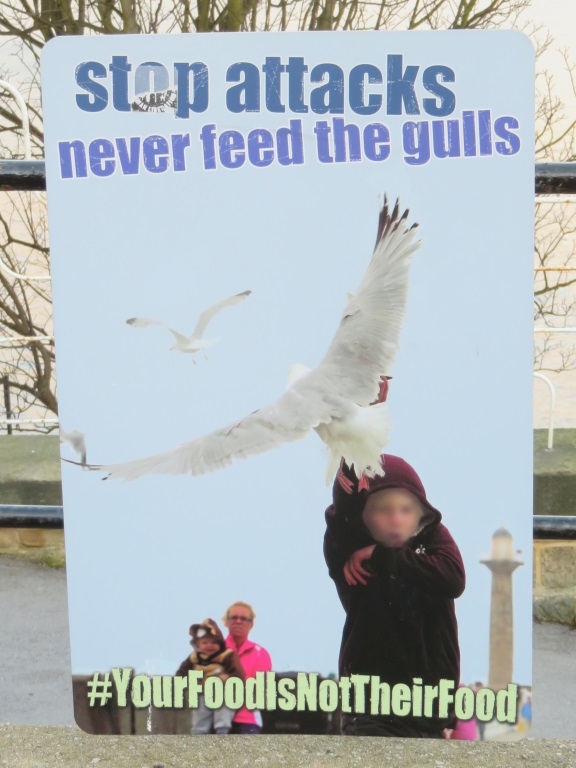
Done on a budget and ever-so-slightly weatherbeaten but look a little closer and there's some fine supporting work in the background as represented by Concerned Father and Child #2.
As a striking piece of artwork, however, there's some stiff competition but more on that in a minute.
Where better to start than at the Grand Hotel, Scarborough's iconic landmark and the setting for ITV's late-'90s, mid-evening, workplace documentary series narrated by Dennis Patterson, no less.

Once Europe's largest, it opened in 1867 to accommodate those now trundling in by train and the construction stats are right up SlyBob's street...
Four towers represent the seasons, 12 floors for the months, 52 chimneys for the weeks and 365 rooms for the, well, you can see the architect, Cuthbert Brodrick, clearly had time on his hands.
Those trundling in by train, by the way, included Anne Brontë, no less, whose consumption was incurable by 1849 and Anne goes Grey in a house now demolished to make way for the Grand.
The number of rooms has since been downgraded to just the 280 and while downstairs might remain resplendent, the faded signs advertising £25-a-night rooms suggest things aren't quite so grand up and beyond the elegant staircase.
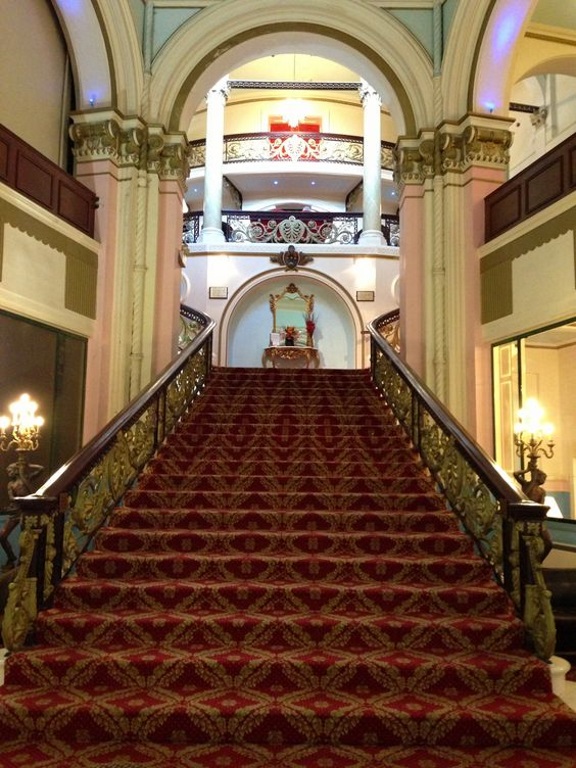
25, actually, represents the number of minutes you'll last until checking if the Travelodge™ has any rooms available, probably.
Directly opposite the Grand and while it's not quite as cheap, it's not far off.

Not one of those purpose-built ones, neither, but all fire doors and angular corridors with creaky, carpeted steps and a ball of string required to find your way back to the lift.
Saying that, it's remarkably good value even if the multistorey parking pushes up the price by a quarter, nearly.
The Spa Bridge leads conveniently down to, well, Scarborough Spa and has done since 1827 although a ticket to cross isn't required today.

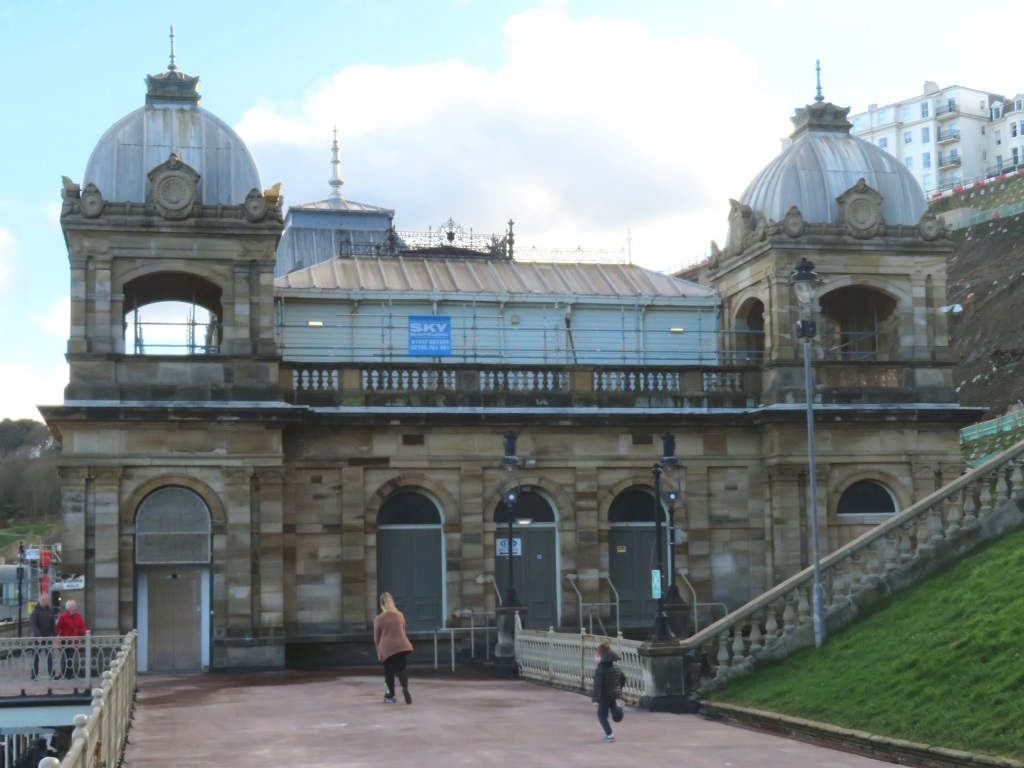
That wasn't always the case when the well-heeled worshippers of the water, staying in their grand, uptown lodgings, were further exploited to avoid making an irritating detour along the bottom.
The site of the original spaw buildings pre-dates Queen Victoria by 100 years but the complex that can be seen today is largely 1880s. This following a fire that couldn't be dampened despite a more than adequate supply of water and it's essentially an events venue, these days.
Weddings, bar mitzvahs and last night, Peter Andre, no less, which is an even insanier notion than the provision of eggy water back in the early 1700s.
Only those with four wheels are prohibited from proceeding where one of Scarborough's two remaining funiculars, not shown, provides an elevating engagement with banana-mad Joseph Paxton's sloping, Victorian vegetation.


Things, however, aren't currently so scenic and you'll have to wait until Christmas 2019 when stabilisation of this section of South Cliff Gardens is completed, they reckon.
Only then will residents and guests up on the Esplanade not have to worry about waking up in the Spa but that wasn't the case a little way south.
The Holbeck Hall Hotel relocated to the beach in 1993 and it wasn't even the fault of the sea. Heavy, summer rain washed away topsoil causing it to topple but, thankfully, they'd managed to evacuate all of the visitors. That, however, was just the day before so didn't leave a great deal of time for the Countdown to the inevitable.
Leaving the Spa behind you, the sea wall is just about where Scarborough's best bit of beach begins as the rocks run out.

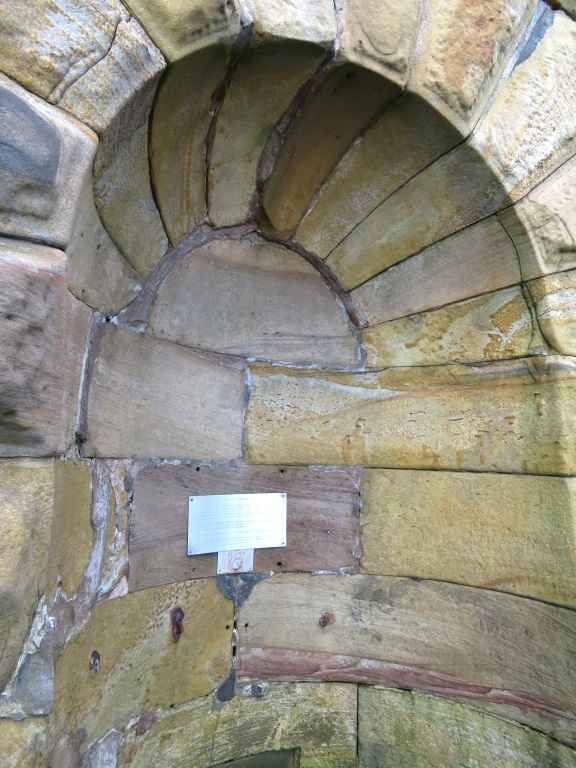
The steps down aren't solely to the sand, a recessed arch contains a drinking fountain for the fortifying fluid that kick-started Scarborough's reputation as a resort.
It's not quite known when it was declared unfit for human consumption, the lettering's a little worn, you see, but that decision is the reason for the Spa now playing host to the likes of Peter Andre, no less.
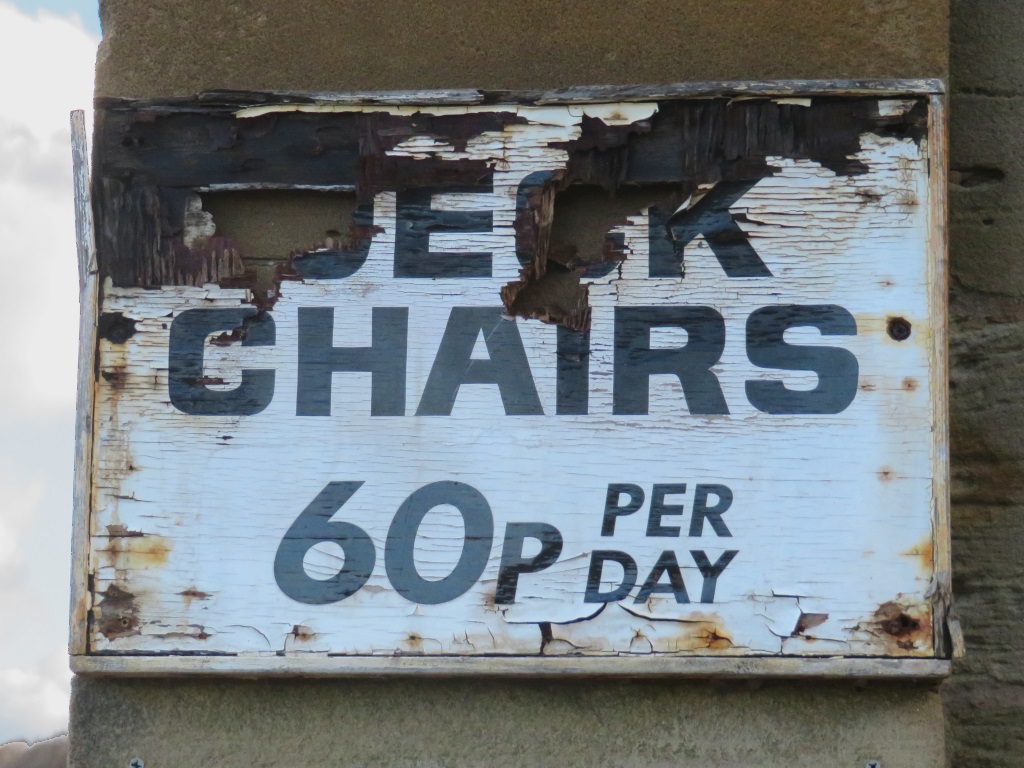
It's likely to have been around the time the deckchair providers shut up shop as people started taking their holidays in Torremolinos, with Thomson™s, in the '70s, probably.
Pass back by and below the Spa Bridge and the Grand Hotel where one of the non-functional funiculars can be found although it's not too far to the other one that works.

This one is a café, top and bottom, and upstairs even incorporates the original cars but back downstairs, this marks the start of, what might be thought of as, traditional Scarborough.
The resort is being greedy bay-wise, and North Bay provided the lower middle classes with their lodgings when budgets didn't extend to the Grand.
South Bay is more of a 20th-century invention and with the Holiday Pay Act of 1938, working class families started to arrive.
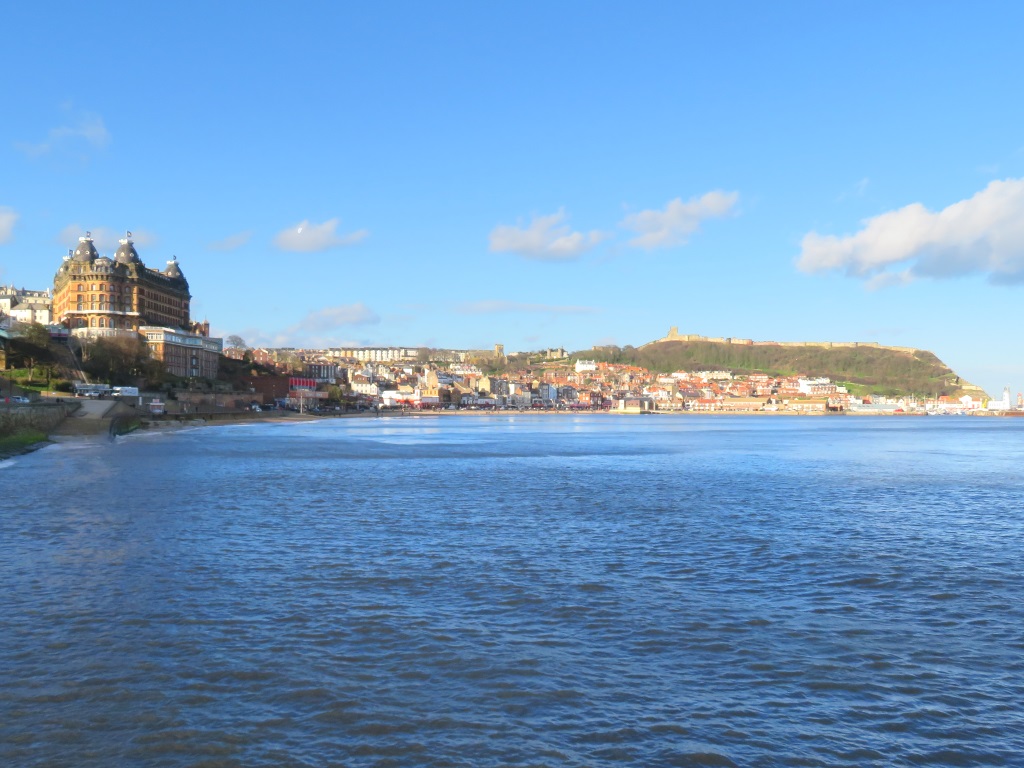
With people a little preoccupied, however, it wouldn't be until post-war when things really exploded, in a very different kind of way, along South Bay.
North Bay is still seen as the swankier of the pair but you big bunch of snobs will have to find that out for yourselves since there simply isn't enough time for that today.
Along here it's all Fish & Chips, Kiss-me-Quick hats and old-skool-style 'musements where some of the annual £361 million spend by visitors to North Yorkshire will make its way into the slots, probably.

This stretch of coast is the second most visited destination in the country, after London, of course, by English tourists, they say, and the respective queues for the Tower of London or an ice-cream here in August testify to that.
Alongside the Kiss-me-Quick hats, by the way, are some more, erm, 'adult' offerings for the hen parties where those sticks of 'rock' were, on first inspection, thought to be misshapen rejects from the factory.
Now, here's something that hasn't been seen in donkey's years, haven't seen a donk in yonks.
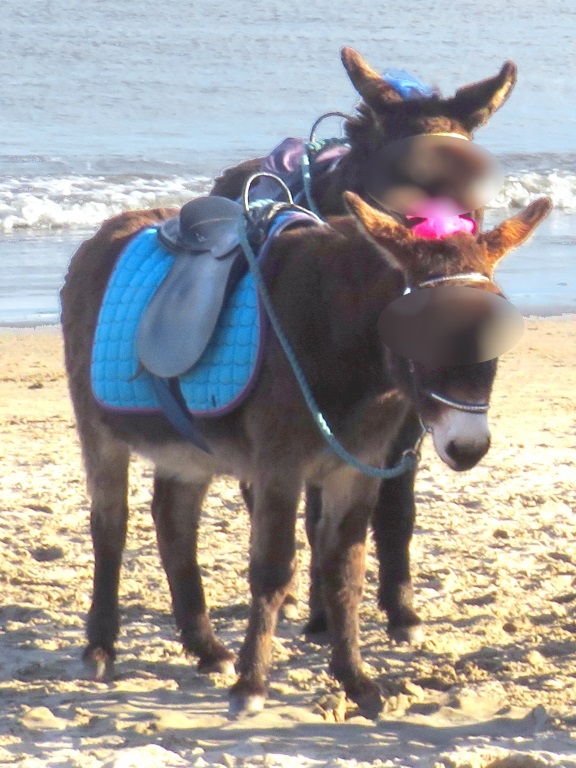
There was a bit of an assumption that those fat cat EU bureaucrats in Luxembourg City Hall, or wherever, had them all in sanctuaries but it seems that's not the case.
Eeyore, therefore, isn't just an exclamation of surpise in these parts... 'Eeyore bugga, av thee seen those sticks o' rock!'
You may have noticed a gap in proceedings where once stood the Art Deco-era Futurist Theatre and cinema.

With the 12th largest capacity in the country, it was still packing 'em in, well into the noughties, before a controversial decision to demolish in 2017 was made before anyone could take the campaigners' cries to get it listed taken seriously.
It's soon to be an attraction run by the people behind Flamingoland™, which, with more Premier League™-like, North Yorkshire stats, is the 3rd most popular paid attraction in the country, didn't you know.
Transportation difficulties over the moors meant that Scarborough, even in the heyday of the herring, never had a huge fishing industry although the administrative buildings on the quay weigh in with evidence of some substance.
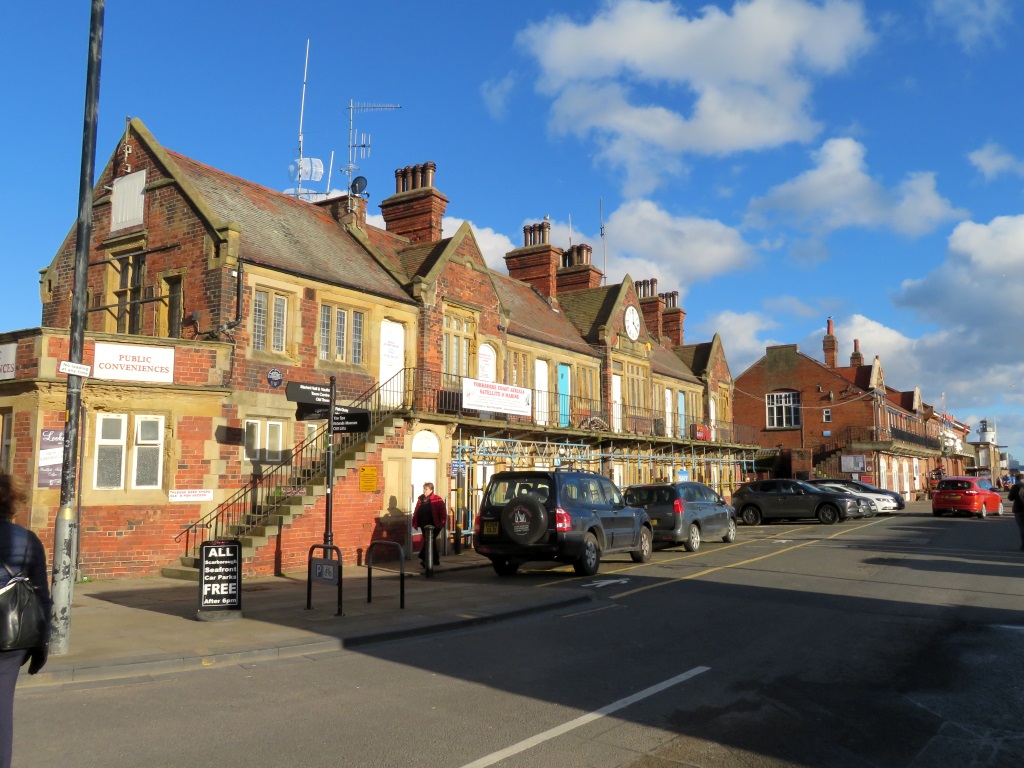

It still harbours a small, working fleet, out to which you can wander, not that any of these will be returning with a 700-pound tunny this afternoon.
That's an Atlantic bluefish tuna if you'd rather and were commonly caught in the North Sea up until the '50s before the mackerel were really massacred.
This led, in the '30s, to Scarborough's brief claim of being the country's capital for big-game fishing, an elitist pursuit whose participants were already without qualms about shooting elephants.
Just for fun, they'd have had a pop, probably, at the intrepid, little turnstone, turned out in their numbers today to scavenge for scraps.

Thankfully, their inquisitive nature means they didn't go the way of the dodo and they're not so fussy eaters, neither. Discarded bananas are a particular favourite of theirs, it's said, that and washed up corpses, apparently.
Fleshpots pack the top end of South Bay but there's a hint this isn't a recent cultural phenomenon. The Bethel Mission Chapel sought to keep the salty, old sea dogs off the sauce until as recently as 1987 when services switched to a different kind of pasta.

This, a little too public-looking, public convenience is a drinking fountain, of course, and again, all should one's whistle have been tempted to wet elsewhere, they say.


There's a final temptation to carry on around the headland into North Bay but, hang on a minute, where could those steps up on the left possibly lead to?
Coastal headlands with a bit of height to them tend to make ideal defensive locations against seafaring hordes of invaders. That's very much the case with Scarborough and there's been one here since the 4th century, they think, not that it proved particularly effective.

The Old Norse in Scarborough's name suggests the Vikings sneaked an away win, early doors, but that's been buried by Henry II's handiwork, who turned the wood to stone.
Most of his 12th-century tower still stands, not shown, but to get up close you'll need to arrive before 4 PM and part with some English Heritage™ pounds. That also grants access to the more-modern ramparts but arrive after that and they'll have pulled the portcullis up.

These places are notoriously expensive to heat in winter and, over the centuries, it fell into the inevitable state of disrepair. The worst damage, however, was done at the beginning of World War I when 500 shells showered the town and 17 civilians lost their lives as well as 80-odd rooms at the Grand Hotel.
Castle Road leads back towards town where there's no real sense of the seaside until you reach the old almshouses. Wilson's Mariners' Homes are still being charitably run for those without much in the way of life savings but there's a stipulation.

You need to have been a resident of Scarborough for at least 10 years, not less than 50 years of age and to have been to sea for at least a year. That's a shame because, having come to quite like the town, only one of those boxes is being ticked but does once going on a boating lake count?
Head left down Auborough Street where, after a brief stretch of the residential, the town centre soon resumes. The mid-1800s Market Hall assembled the various, Victorian mongers replacing the grimy sidestreets full of butchers, bakers and candlestick makers.
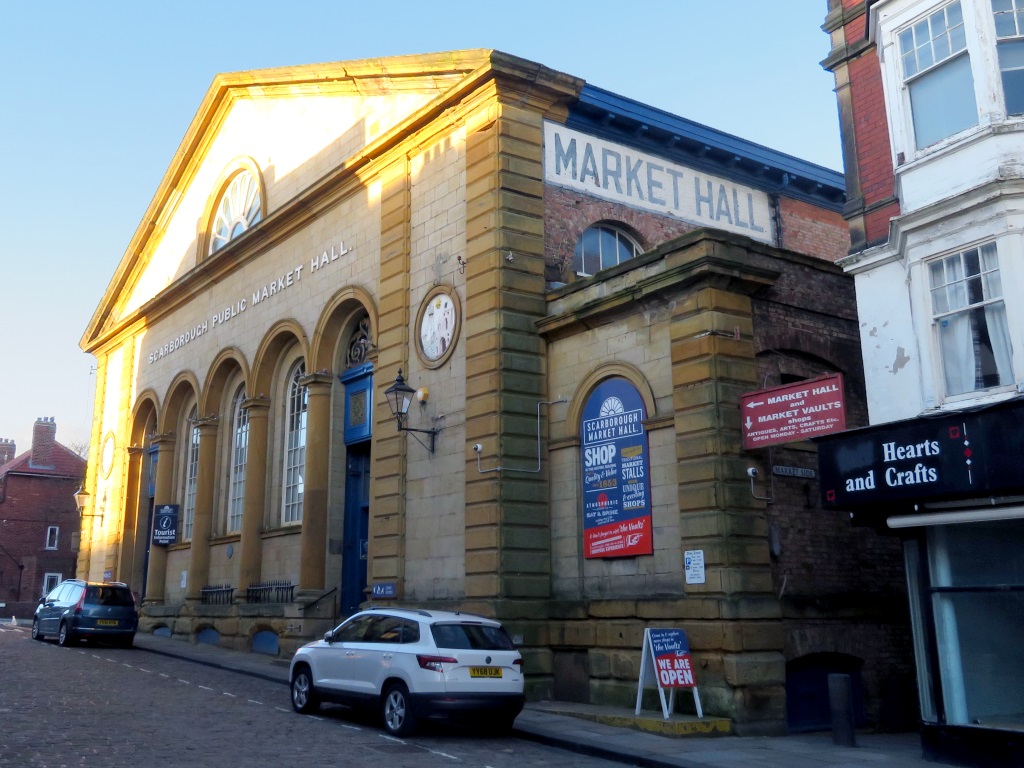
The combined commerce still continues but it's more organic pork, artisan sourdough and wax of the fragrant variety, these days, at least it's thought to be.
Just like the castle, the shutters are up by 4 PM on a Saturday so there's no chance of a scented souvenir. They're lavender laugh, aren't they? The football scores aren't even in yet man!
The Market Hall is just about at the junction with Eastborough, Scarborough's old main drag with an old-skool feel and a slope down to the sea. Heading uphill, however, and you'll hit the modern shops and the TK Maxx™, which, sorry Scarborough, could just about be anywhere.
Colourful murals tempt you down off Eastborough and they're the work of the artists associated with, the anything but, Blandscliff Gallery and Studio.

Rotating exhibitions of paintings, sculptures and ceramics, they say, but that'll have to wait until another day, just like North Bay.
The Blandscliff gallery looks down on the former site of the Futurist whose productions were very much of the end-of-the-pier variety. For something more cerebral, the Stephen Joseph Theatre, up near the train station, is something more of a mecca, opening-night-wise.
Scarborough-born playwright Alan Ayckbourn has a preference for premiering here prior to playing-up in the West End and, since he's the artistic director, he's only gone and done it some 60-odd times. A Chorus of Disapproval?
Come on, this nonsense ain't all that bad, is it?
Spoons have a tradition of naming their pubs based on the history of the town or the old building they invariably inhabit. The inevitable offering in a town of this size is called the Lord Rosebery, one of your lesser-known Prime Ministers, no less.
The original HQ of the Liberal Party's North Yorkshire coastal branch, the building was officially opened in 1895 by Rosebery, AKA Archibald Primrose, who presumably had nothing better to do.
Serving for just over a year and effectively ousted from office for upsetting Europe, it's a good job that sort of thing would never happen nowadays, right readers?
There are no awards for their nearly-out-of-date ale but the Director of Contrived Waterhole Naming gets a respectable (3/5) for a Pointless PM answer.
As for inside? It's a Wetherspoon™s man!
There's time for one final, artistic flourish and the Scarborough Art Gallery can be found on The Crescent, a less royal version of the one in Bath.
This grand, Italianate villa was once a domestic dwelling but now houses the pick of this part of North Yorkshire's fine art with a lot of it donated by local hotelier and collector Tom Laughton.
Brother of the actor Charles Laughton, no less, he's even given them a Gainsborough, a child portrait of some relative or other of the man who invented horseracing, or something.
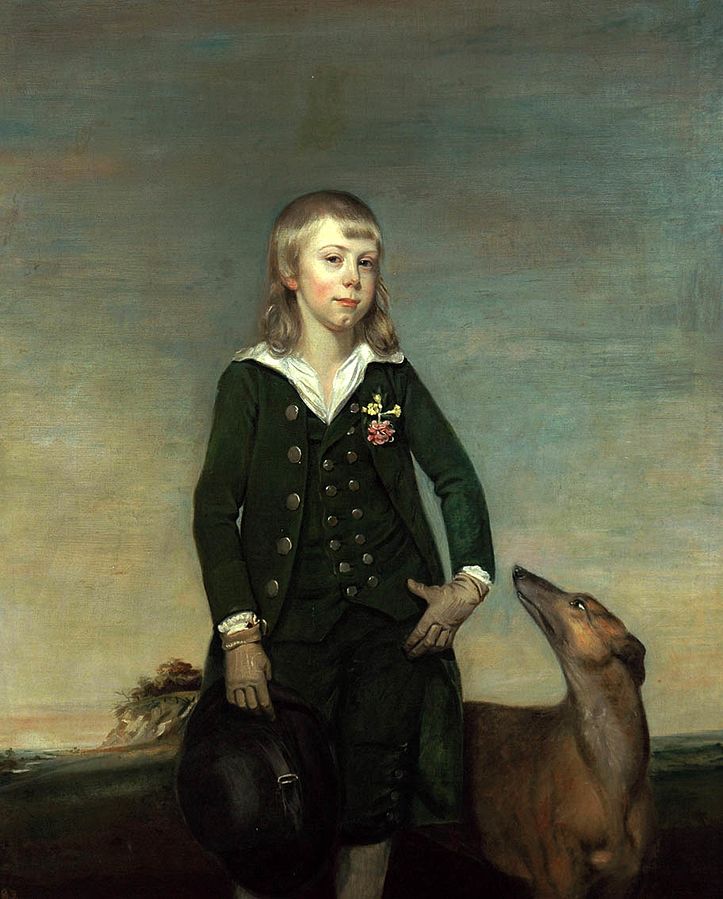
An annual £3 membership represents, as with much of Scarborough, exceedingly good value and also grants access to the Rotunda Museum, not shown, and next door's Woodend Creative Workspace. The workspace is another former family home, this time of a young Edith Sitwell. You know, Edith Sitwell?
She wasn't much of a looker, Edith, and if those words don't sit well with you, take it up with her father since it's pa who's being paraphrased. She severed any parental ties and moved to London to cause quite a stir on the avant-garde performance poetry scene, it seems.
You can find all of this out in the Sitwells' wood-panelled library, when it suddenly decides to rain, unless you're already a friend of Scarborough Museums and Galleries and you move in much more knowledgable circles.
Meanwhile, back near The Grand, there's time for a second, final, artistic flourish at Tracy Savage's gallery. It's after 4 PM so you'll have to peep through the window where there's a darkly comic and melancholic imagining of Scarborough from a not too distant past.
That includes the Futurist Theatre although the landscapes of East Yorkshire are equally well represented since Tracy works out of Hornsea, you see, where that's another story.
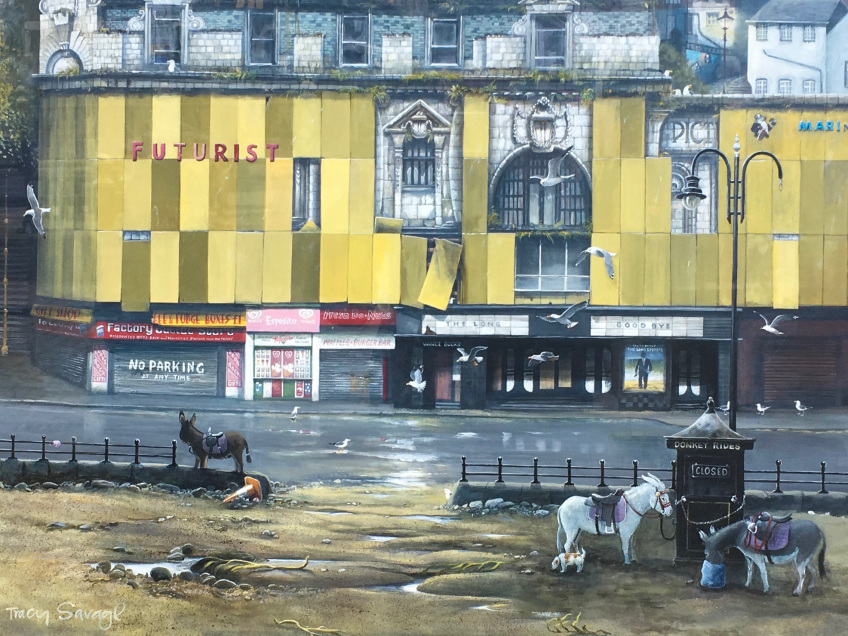
Speaking of the future, quite an appetite has been worked up but Scarborough isn't yet fully delivering on the dining front. It's either a hipster burger or a standard tandoori if the Mom'n'Pop Italian's are all full so it might just have to be some fish and chips, then.
That would be in keeping with the traditional, which is what's largely been seen this afternoon. That was all quite uplifting so that plan might just have to be postponed since SlyBob's really not in the mood for a fight with a seagull.